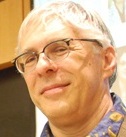The Continuity of Life is Based on
2.2: The cell theory and the continuity of life
- Page ID
- 3906
Observations using microscopes revealed that all organisms examined contained structurally similar "cells." Based on such observations, a rather sweeping conclusion was drawn by naturalists toward the end of the 1800's. Known as the Cell Theory, it has two parts. The first is that every organism is composed of one or more cells (in some cases billions of cells) together with non-cellular products produced by cells, such as bone, hair, scales, and slime. The cells that the Cell Theory deals with are defined as bounded, open, non-equilibrium physicochemical systems (a definition very much like that for life itself). The second aspect of the Cell Theory is that cells arise only from pre-existing cells. The implication is that organisms (and the cells that they are composed of) arise in this way and no other, so the Cell Theory does not say anything about the hope life originally began. We now know (and will consider in great detail as we proceed) that in addition to their basic non-equilibrium nature, cells also contain a unique material that encodes hereditary information in a physical and relatively stable form, namely molecules of double-stranded deoxyribonucleic acid (DNA). Based on a large body of data, the Cell Theory implies that all organisms currently in existence (and the cells from which they are composed) are related through an unbroken series of cell division events that stretch back in time. Other studies, based on the information present in DNA molecules, as well as careful comparisons of how cells are constructed at the molecular level suggest that there was a single common ancestor for all life that lived between ~3.5 to 3.8 billion years ago. This is a remarkable conclusion, given the (apparent) fragility of life - it implies that each cell in your body has an uninterrupted multibillion year old history. What the cell theory does not address is the processes that lead to the origin of the first organisms (cells).
The earliest events in the origin of life, that is, exactly how the first cells originated and what they looked like, are unknown although there is plenty of speculation to go around. Our confusion arises in large measure from the fact that the available evidence indicates that all organisms that have ever lived on Earth share a single common ancestor, and that that ancestor, likely to be a singled-cell organism, was already quite complex. We will discuss how we came to these conclusions, and their implications, later on in this chapter. One rather weird point to keep in mind is that the "birth" of a new cell involves a continuous process by which one cell becomes two. Each cell is defined, in part, by the presence of a distinct surface barrier, known as the cell or plasma membrane.The new cell is formed when that original membrane pinches off to form two distinct cells (FIG→). The important point here is that there is no discontinuity, the new cell does not "spring into life" but rather emerges from the preexisting cell. This continuity of cell from cell extends back in time back billions of years. We often define the start of a new life with the completion of cell division, or in the case of sexually reproducing multicellular organisms (including humans), a fusion event, specifically the merger of an egg cell and a sperm cell. But again there is no discontinuity, both egg cell and sperm cell are derived from other cells and when they fuse, the result is also a cell. In the modern world, all cells, and the organisms they form, emerge from pre-existing cells and inherit from those cells both their cellular structure, the basis for the non-equilibrium living system, and their genetic material, their DNA. When we talk about cell or organismic structures, we are in fact talking about information present in the living structure, information that is lost if the cell/organism dies. The information stored in DNA molecules (known as an organism's genotype) is more stable than the organism itself; it can survive the death of the organism, at least for a while. In fact, information-containing DNA molecules can move between unrelated cells or from the environment into a cell, a process known as horizontal gene transfer, which we will consider in detail toward the end of the book.
Contributors and Attributions
-
Michael W. Klymkowsky (University of Colorado Boulder) and Melanie M. Cooper (Michigan State University) with significant contributions by Emina Begovic & some editorial assistance of Rebecca Klymkowsky.
altcamortautley53.blogspot.com
Source: https://bio.libretexts.org/Bookshelves/Cell_and_Molecular_Biology/Book:_Biofundamentals_%28Klymkowsky_and_Cooper%29/02:_Lifes_diversity_and_origins/2.02:_The_cell_theory_and_the_continuity_of_life

0 Response to "The Continuity of Life is Based on"
Post a Comment